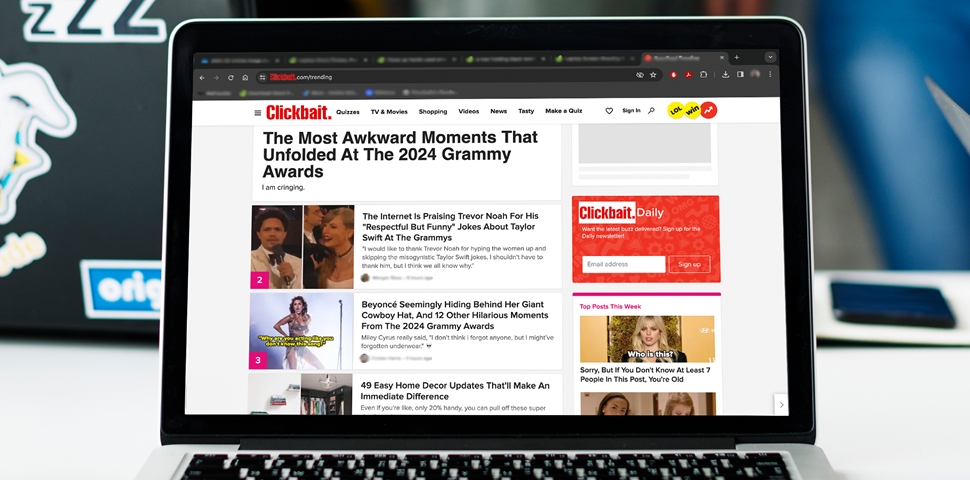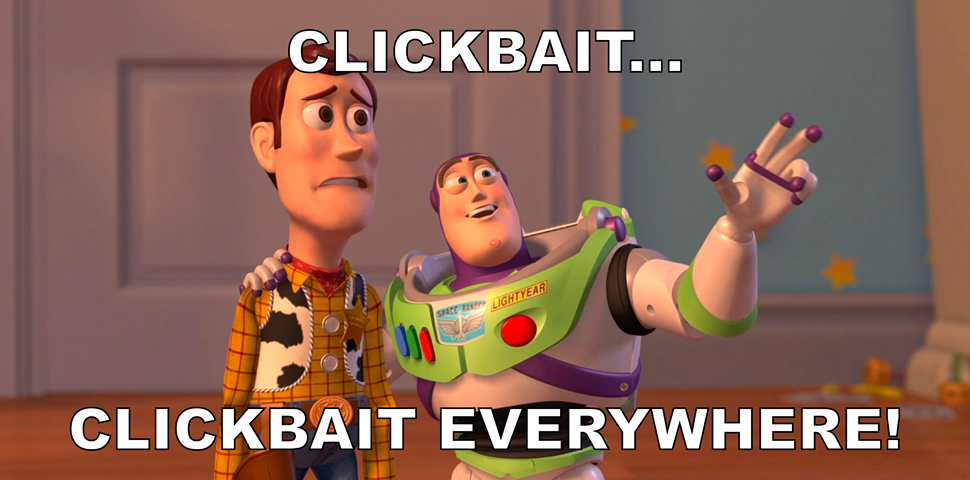A wise man once said, “There's a fine line between fishing and standing on the shore like an idiot."
The same applies to brands that use misleading headlines that overpromise and underdeliver – because you may think you’re being clever, but it makes your brand look like a numb nut.
Like BMW drivers, vaping, and people who pay all their monthly bills at the express till, clickbait is annoying and it’s everywhere.
Why trick your audience when you could stop them scrolling with valuable and authentic content? Content that makes them feel glad that they clicked on it, instead of duped and filled with regret, like a post-Brexit UK.
What is clickbait?
Clickbait grabs attention and pretends to be something it’s not. In South Africa, we have some great examples of clickbait, thanks to a popular tabloid newspaper, The Daily Sun.
Legendary headlines include SATAN GOES TO SCHOOL! and PUNANI LOOTED MY FRIDGE! Yes, these are always in all-caps and have exclamation marks to drive them home. No, we have not made them up.

We want to point out that The Daily Sun, used to be South Africa’s biggest-selling newspaper, but it seems that even their readers have either tired of their clickbait headlines or moved online (most likely both).
Clickbait isn’t only restricted to tabloids. Look at these headlines, taken from a business website aimed at entrepreneurs:
I Used Apple's Most-Hated Product for 2 Months and Learned This Surprising Lesson
What Amazon and Virgin Know About Growing a Business That You Don't
These are classic examples of clickbait, as they use emotive language (‘hated’), personal pronouns (‘I’; ‘you’), there’s an element of suspense (‘surprising’), there’s the use of piggybacking (‘Apple’, ‘Amazon’, ‘Virgin’), and a curiosity gap (we know something you don’t). Granted, the headlines are enticing, but once you start reading the content, it’s a bit of a letdown.
First impressions count

Did you know it takes a 10th of a second to form an impression of someone? Like some random judging you, your brand's first impression often starts in a nano-second with a click. In a digital age saturated with attention-grabbing content, they aren't short-lived, either. First impressions are the currency of the internet.
Sure, clickbait can help drive traffic to your website. But if a headline is not followed by quality content that’s relevant and helpful to your audience, it can damage your brand’s credibility. Not giving your audience what they clicked for also increases your bounce rate and decreases , things that implicate your website’s rankings.
We all fall for clickbait because we’re human, and humans are naturally led by their emotions and FOMO (both of which clickbait relies on heavily). So how can this powerful tactic be used ethically?
The power of clickbait done right

It all comes down to creating magnetic headlines that promise and deliver. Think of it as a handshake, not a sleight of hand.
It also means that your audience (and potential customers) need to be able to trust you. In fact, research shows that people respond more positively to someone who comes across as trustworthy rather than confident. If you use clickbait, that trust is lost very quickly.
Crafting headlines that grab attention without a bait-and-switch is an art because they need to spark curiosity and be authentic. We always bang on about this word (authentic was Merriam-Webster’s Word of the Year for 2023) because authenticity and meeting your audience’s expectations is critical (ask Gen Z).
Your headlines need to grab attention without duping, create intrigue without being sensational, tease instead of trick. No easy feat, but strategic, non-misleading clickbait can significantly impact audience engagement and turn curiosity into commitment.
When done right, clickbait helps you catch the big fish, instead of standing on the shore with a rod in your hand.
Enjoyed this article? Share it with your peers so you look clever. Want to stop staring at the water and reel something in? Contact us; we can help with that.




